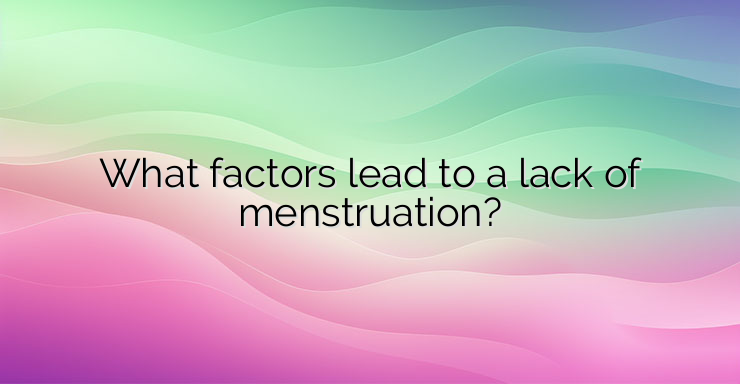The term hypogonadotropic hypogonadism is associated with disturbances in the hypothalamic-pituitary axis. As a result, impaired gonadotropin stimulation of the ovaries is observed, which leads to impaired development of ovarian follicles. It is characteristic that low values of luteinizing LH and follicle-stimulating hormone FSH are observed in affected patients. In the presence of underdevelopment or severe damage to the pituitary gland, low serum concentrations of these hormones can also be observed. Hypogonadotropic hypogonadism is characterized by luteal dysfunction, oligomenorrhea and, in more severe cases, amenorrhea, absence of menstruation. Acquired disorders in the functions of the hypothalamus are most often observed. The lack of gonadotropic hormones leads to a chronic lack of ovulation and is considered to be due to functional disorders of the hypothalamus or higher centers in the brain. Absence of menstruation for these reasons is called hypothalamic amenorrhea. This nosological unit includes three main categories of conditions: eating disorders, excessive physical exertion and stress. The hypothalamus in each woman has a different sensitivity to environmental factors. Anorexia and bulimia can lead to amenorrhea. Hypothalamic dysfunction is significant in anorexia and can affect the hypothalamic-pituitary axis as well as reproductive health. Amenorrhea in anorexia may precede, result from, or occur concurrently with the drastic loss of body mass. In some cases, however, the restoration of normal body weight is not associated with a complete restoration of the menstrual cycle. When the cause of a lack of menstruation is excessive physical activity, there is variability in the regularity and duration of the menstrual cycle, which is due to altered hormonal function. In patients who perform very intense physical activity, reproductive health disorders are also observed, which are associated with menstrual dysfunction, low energy levels and decreased bone density. Sometimes eating disorders, excessive physical activity, and stress work together and their effects occur simultaneously and overlap. Physical activity affects the release of endogenous opioids, which, however, alter the pulsatile secretion of gonadotropin-releasing hormone. Under stress, there is an increased release of corticotropin-releasing hormone from the hypothalamus, which causes the release of the stress hormone – cortisol from the adrenal gland. Corticotropin-releasing hormone also affects the secretion of gonadotropin-releasing hormone. Eating disorders cause disturbances in ovulatory function through various hormones such as insulin, insulin-like growth factor-1, cortisol, adiponectin, ghrelin and leptin. Leptin is produced by adipose tissue, it provides the link between energy balance and reproductive health.Leptin is defined as a satiety factor and mutations in the leptin genes lead to significant obesity, diabetes and hypogonadism. Low levels of leptin are observed in anorexic patients. Decreased serum leptin concentrations, which are due to loss of body mass, secondarily stimulate the secretion of neuropeptide Y, which affects the pulsatile release of gonadotropin-releasing hormone. All processes that lead to the destruction of the structure of the hypothalamus disrupt the secretion of gonadotropin-releasing hormone and can be the cause of hypogonadotropic hypogonadism and amenorrhea. Tumors are one of the leading causes of amenorrhea. Among them, craniopharyngiomas, germinomas, endodermal sinus tumors, gliomas and metastatic lesions are characteristic. The majority of cases of acquired pituitary dysfunction occur after the onset of menstruation and are combined with normal development during puberty, at which point amenorrhea occurs. In some cases, these diseases can develop before the onset of puberty, which leads to its delay and primary amenorrhea. References: Williams Gynecology, 4th Edition, McGraw Hill Education, 2020


Leave a Reply